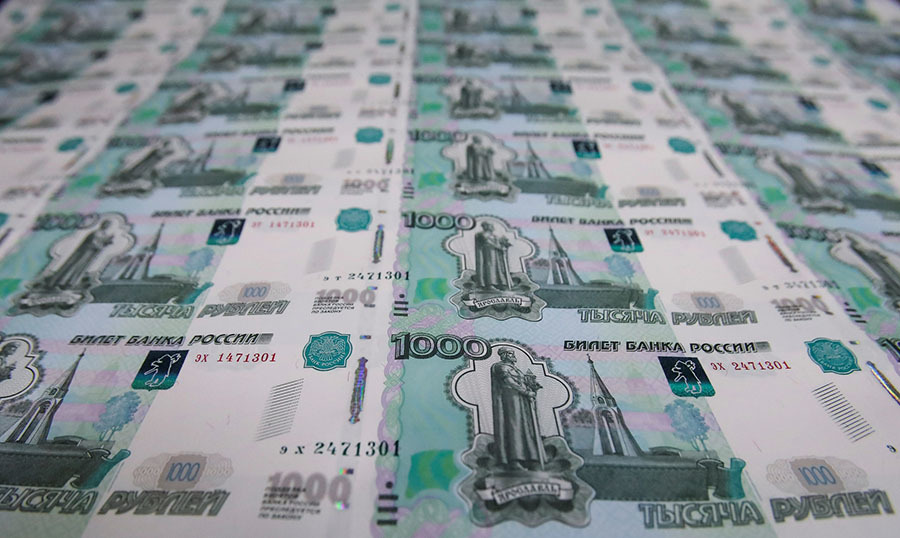On Friday, March 20, the Board of Directors of the Bank of Russia met the expectations of market participants and kept its key rate at 6% per annum.
The Central Bank explained this decision as the need to contain inflationary risks that arose due to the negative impact of external factors on the country's economy.
“In February - March, events develop with a significant deviation from the basic forecast scenario of the Bank of Russia. This is due to a change in external conditions: the spread of the coronavirus epidemic and a sharp decline in oil prices. The weakening of the ruble is a temporary inflationary factor, ”the regulator said in a statement.
Recall that from the beginning of March, against the backdrop of the global spread of coronavirus and the collapse of the OPEC + transaction, oil prices almost doubled. In particular, the cost of Brent energy at the moment fell below $ 25 per barrel - for the first time since 2003.
A sharp reduction in the price of oil provoked a weakening of the Russian currency. Thus, the dollar exchange rate rose to 81.9 rubles for a short while, and the euro exchange rate rose to 89.6 rubles. The last time similar indicators could be observed at the beginning of 2016.
As the head of the Central Bank Elvira Nabiullina noted, due to the temporary weakening of the ruble, inflation in 2020 will approach the target at 4% more rapidly than previously forecasted.
“The dynamics of financial markets, the risks of a possible further decline in oil prices affect inflationary and devaluation expectations. It is important to prevent the inflation spiral from spiraling, ”Nabiullina said during a press conference.
According to her, by the end of the year inflation may briefly exceed the target level, but already in 2021 the value will return to around 4%.
Recall, the last change in the key rate of the Central Bank occurred in February. Then the regulator lowered it from 6.25 to 6% per annum and explained this decision by a sharp slowdown in inflation.
The next meeting of the Board of Directors of the Central Bank is scheduled for April 24. According to RT General Director of Sputnik Capital Management Alexander Losev, in the end of the April meeting, the regulator may again lower its key rate.
“Low interest rates are a long-term global trend that is aimed at maintaining business activity and stimulating domestic demand. Therefore, the Central Bank, after stabilization of the national currency rate, is more likely to continue to reduce the rate, and by the end of the year we can see a decrease in the indicator to the level of 5-5.5% per annum, ”the analyst believes.
- Reuters
- © Maxim Shemetov
Experts interviewed by RT praised the likelihood of maintaining the Central Bank key rate at 6% per annum. According to Denis Ikonnikov, portfolio manager of QBF, investors in their actions took into account the decision of the Bank of Russia in advance. Therefore, the actions of the Central Bank in the short term will have a neutral effect on the ruble.
After the announcement of the results of the meeting of the Board of Directors of the Central Bank, the Russian currency showed a slight strengthening on the Moscow Exchange. The US dollar depreciated by 1.5% to 78 rubles, while the euro depreciated by 1% to 83.8 rubles. However, already at the evening auction, the values rose to 78.85 and 84.66 rubles, respectively.
The official exchange rate of the Central Bank on March 21 was 78.04 rubles per dollar and 84.16 rubles per euro.
“Maintaining the CBR rate was largely expected by market participants, and therefore did not significantly affect the ruble exchange rate. Nevertheless, this can serve as a signal for market participants that the current instability is under control, and therefore there is no need to change monetary policy, ”Ikonnikov explained.
As Arseniy Dadashev, director of the Academy of Financial and Investment Management, told RT, the ruble’s fluctuations at Friday's auctions are largely due to the ambiguous dynamics of oil prices. At the beginning of trading, the cost of Brent raw materials on the ICE exchange in London grew by 7%, to $ 30.6 per barrel, but in the afternoon fell to $ 28.3.
“Oil quotes put pressure on the ruble and hinder its strengthening. Therefore, in the absence of a recovery in commodity prices, the dollar in the near future is likely to continue to be close to the level of 78.8 rubles, ”the analyst explained.
Meanwhile, experts interviewed by RT do not rule out the restoration of the Russian currency by the end of spring. In many ways, the further dynamics of the ruble will depend on the dynamics of commodity quotes and possible negotiations between the former countries participating in the OPEC + transaction.
“If Russia and Saudi Arabia still manage to find a compromise in order to achieve a balance in the oil market amid falling demand due to coronavirus, then the ruble may strengthen by the end of spring. In the event of restoration of oil prices to $ 40 per barrel, the dollar may return to the level of 75 rubles, and the euro to the mark of 81 rubles, ”concluded Denis Ikonnikov.

